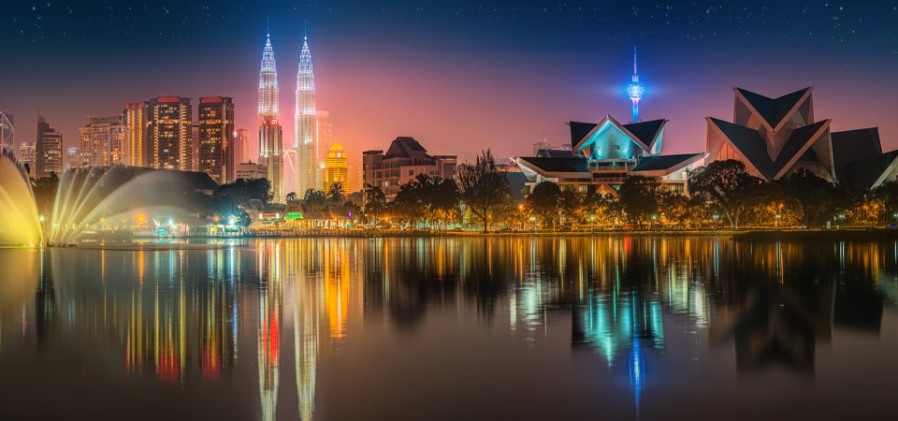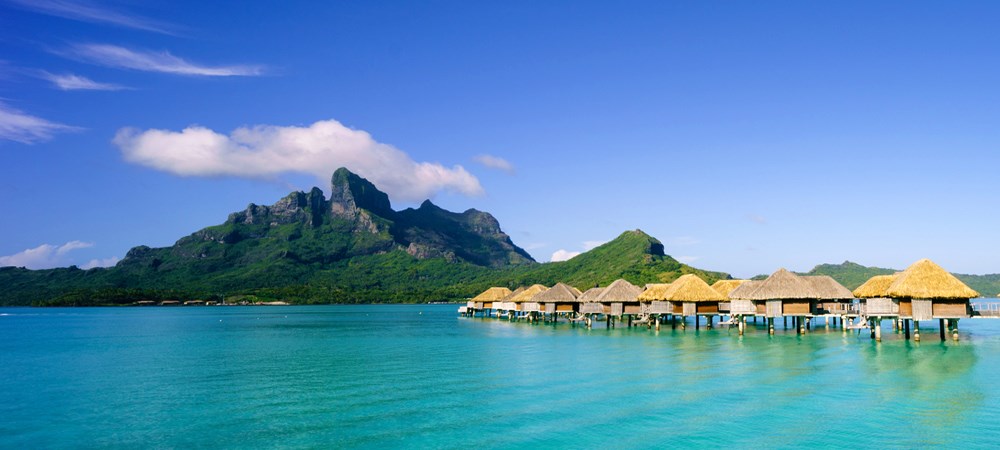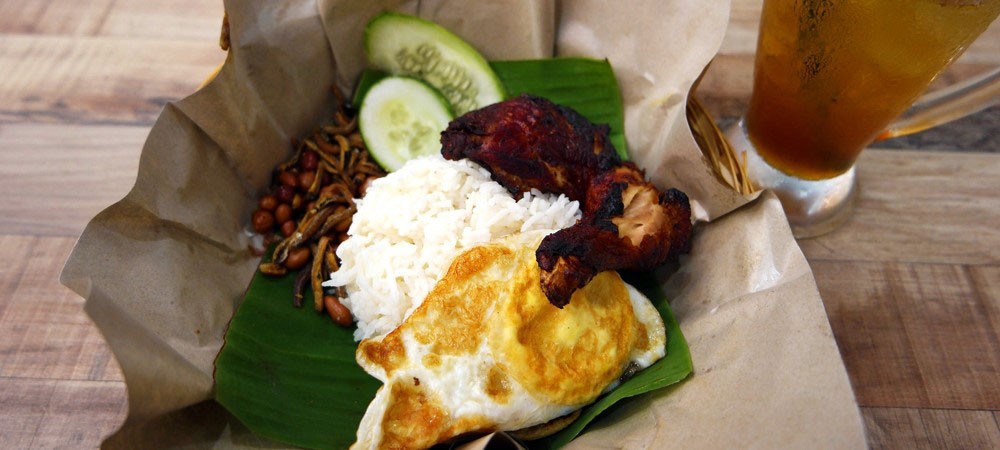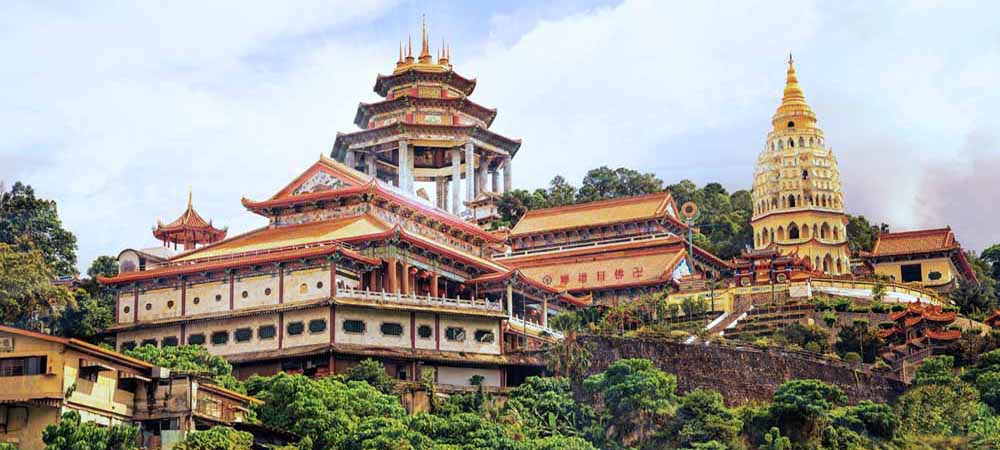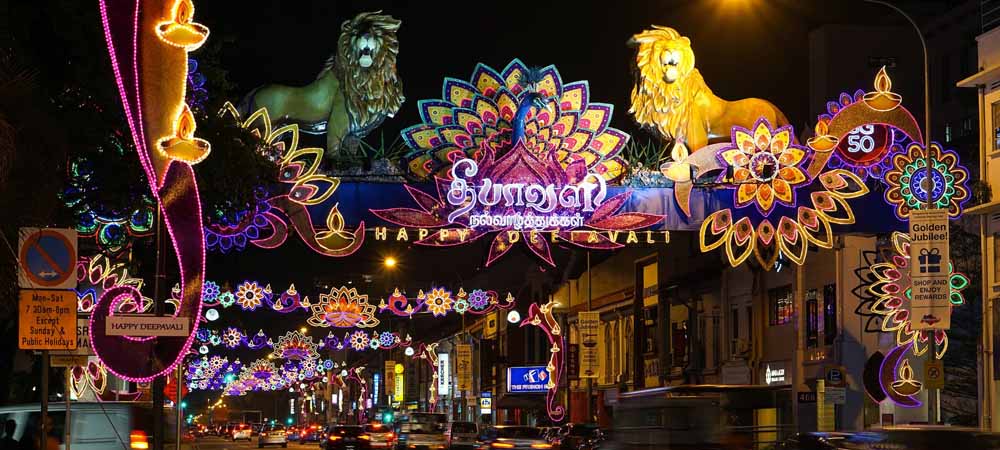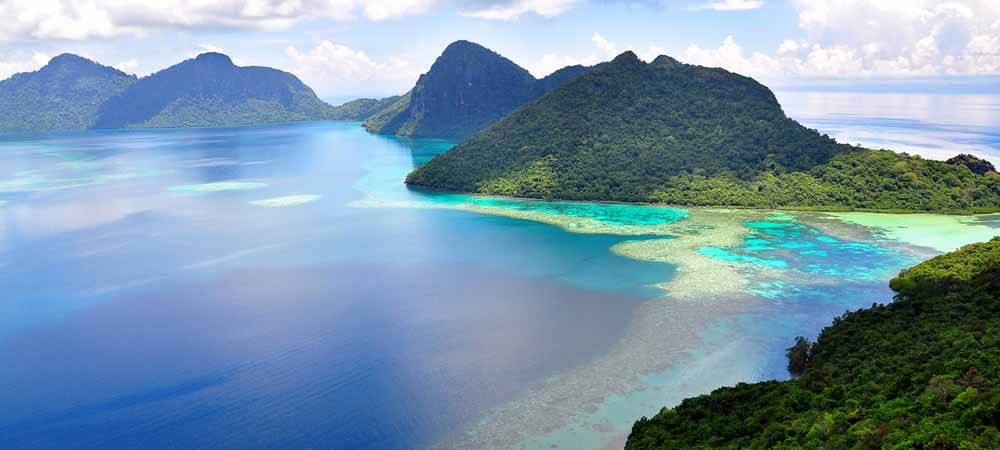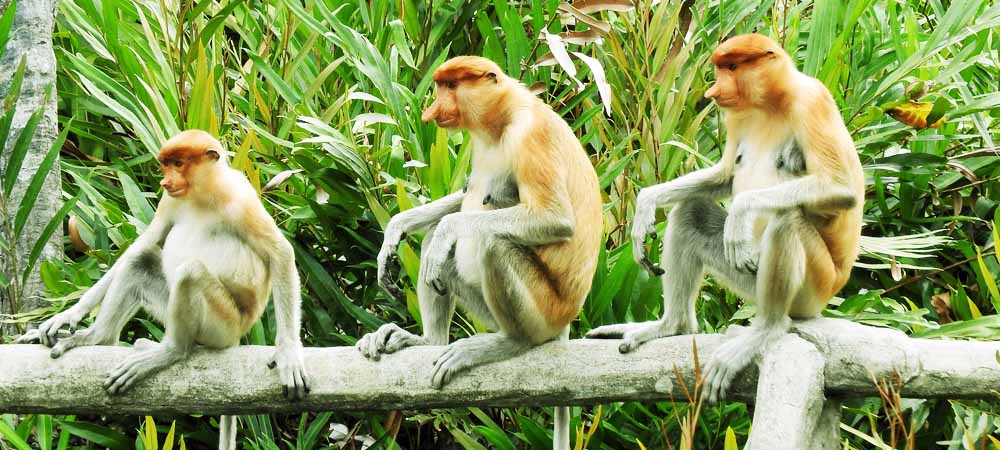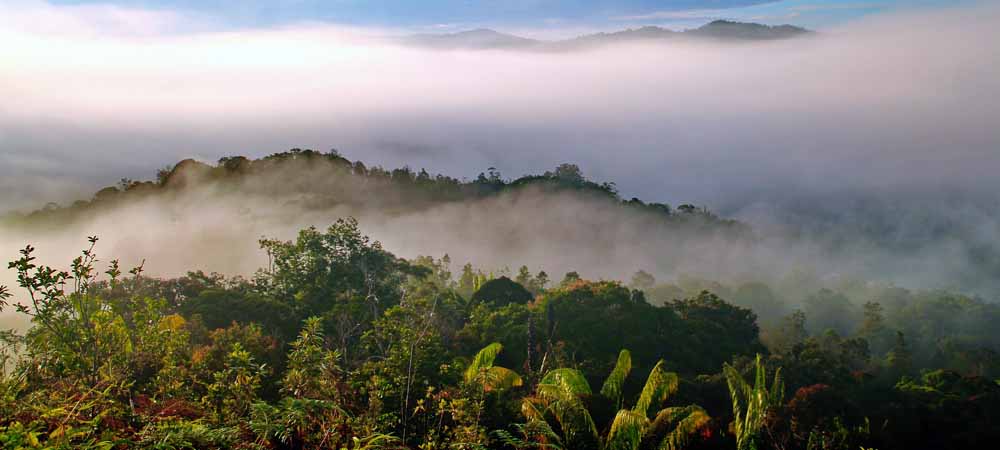Spanning across the southern tip of the South East Asian peninsular and 800 kilometers east across the ocean to the magnificent island of Borneo, where it has two states on the northern stretch of the island called Sarawak and Sabah, Malaysia is blessed with landscapes ranging from mountains, ancient rain forests, rolling green hills to stunning beaches and coral-gardened islands with some of the best diving and snorkelling sites in the world.
Although around 50% ethnic ‘Malays’ make up the majority of the population, there are also huge minorities of Chinese (30%), Indian (10%) and other smaller pockets of Portuguese in Melacca, and indigenous people – the ‘Orang Asli’, making Malaysia truly a multicultural nation. This has also inevitably created an astonishing mix of religions and faiths: Islam, Christianity, Buddhism, Taoism, Hinduism and Sikhism, as well as Animist/Shamanistic beliefs living together in relative harmony. When walking around Kuala Lumpur, you will likely see Hindu Temples alongside Taoist and Buddhist temples, as well as Churches and Mosques.
Malaysian food is as varied and colourful as Malaysia’s geography and multiculturalism. It’s quite possible to have a noodle soup for breakfast, an Indian for lunch and a Chinese for dinner. This variation is a real treat. Yes; It may sound a little cliché, but Malaysia really does have something to offer everyone; from young and adventurous nature lovers to beach-bums, from culture-vultures to food enthusiasts, and everyone else in between.
And the icing on the cake: Malaysia’s infrastructure and economy is way ahead of other nations in the region, making getting around almost always easy and comfortable. Practically everyone speaks at least some English in Malaysia and there is very little ‘hassle-factor’ or annoying touts to speak of. Here are 8 reasons why your next trip to Asia should be Malaysia.
1. Beaches
Aerial view of tropical island of Bohey Dulang near Siapdan Island, Sabah Borneo, Malaysia.
Beaches in South-East Asia are arguably the best in the world. People so often overlook Malaysia for the more famous beaches in Thailand, the Philippines and Indonesia. This makes the less well-known beaches of Malaysia more tranquil with much less of a young backpacker crowd and no full-moon parties, those that have really spoilt once-serene beaches in places like Thailand.
Lie just off the coast of northern mainland Malaysia, close to the Thai border, the Perhentian Islands have by far my favourite beaches for relaxation. Between the two islands, Perhentian Kecil is more for the low-key backpacker crowd, and Perhentian Besar, slightly larger, quieter and more serene, has more high-end accommodation options, great for couples, honeymooners and families who want a slice of paradise and to get away from it all for a while.
Both islands are part of a Marine Conservation Area, and as such, the only way of getting around is on foot – which is relatively easy and fun due to the gentle topography. The area has some beautiful jungle paths linking between beaches – or ‘water taxis’ which can take you from one secluded beach to the next (or between islands) for a few dollars. Activities on these islands are very much limited to snorkelling or scuba diving, but fortunately there are lots of options for both. The water visibility here is always around 20 metres – crystal clear – and is home (and famous for) to large populations of turtles as well as tropical fish and reef sharks. The best site for diving is arguably the Pinnacle, also known as “Tokong Laut”- a coral-reef capstone spiralling out to the surface of the water. For snorkelling, Teluk Pauh is a great site for its sheer variation in tropical fish and turtles. It’s impossible to pick a favourite as any beach on Besar Island is fantastic.
You can spend a week or two here ‘beach-hopping’ from one beach to another by jungle paths or water taxis and will be amazed when you come across those majestic sea turtles and fearsome looking but generally harmless Reef Sharks. Or just relax and work on that tan, enjoying the white, pristine, quiet beaches with their crystal clear water.
2. Food
With so many different cultures calling Malaysia home, you are in for an absolute treat when it comes to food. Virtually every town and city on the mainland and on Borneo has Chinese, Southern Indian and traditional Malay cuisine. In particular, the Malay national dish is widely considered to be Nasi Lemak – coconut rice with a sambal sauce (basically a spicier version of salsa sauce) and anchovies. This delicious dish can be found everywhere and is the quintessential street food in Malaysia. Another very popular Malay dish you can find both on the street and in restaurants is spicy fried noodles (Mee Goreng) with seafood such as my personal favourite – tiger prawns, in a coconut rich yellowed curry sauce. As for Indian – Southern Indian cuisine dominates here. You can expect to find delicious Masala or Paper Dosai, which is basically thin crepes filled with vegetable or meat fillings, often served with Raita (a thin yogurt) and side dishes such as Dal (lentils). And Malay-Chinese? Expect the usual authentic Chinese dishes such as Pork rib soup (Bak Kut Teh), as well as something unique to Malaysia, O-Chian. It’s nothing but Oyster Omelette, fried until crispy and with a side dish of chili sauce. Simple perhaps, but absolutely delicious and is outright my favourite.
3. Culture
Although Kuala Lumpur has its own ‘Little India’ and ‘Little China’ districts that are interesting in their own right, Georgetown – a UNESCO World Heritage City is hands down the best place to see Malaysia’s multiculturalism. Nestled in the north-west just off the Malaysian mainland, on the island of Penang, connected by one of the largest bridges in the world, Georgetown is filled in its colourful glory, with Hindu and Taoist Temples alongside numerous mosques and the odd Catholic Church. It’s just a joy to spend a few days in this place sampling the cuisine, visiting the wonderfully preserved temples from these numerous religions, and learning about the city’s colonial past.
Another UNESCO World heritage to visit for a dose of culture is Malacca. This place offers a glimpse into an extraordinary empire founded centuries ago and later colonised by the Portuguese, Dutch and British. Here you can find a rich tapestry of multicultural influences displayed through its heritage architecture, diverse lifestyles and unsurpassed charm.
Elsewhere in Malaysia, you can expect to find some pretty spectacular treats. Located at the entrance to the stairs of Batu Caves is the 43 metres high giant gold statue of the Hindu God Murugan. Within the caves are other statues dedicated to Hindu gods such as Hanuman and Lord Rama.
4. Festivals
Major holidays in Malaysia coincide with some of the biggest cultural/religious festivals. Ramadan is the biggest Muslim holiday. It includes fasting – at which times many restaurants maintain a low-profile to respect this Muslims ritual, regardless of whether they are Muslim or not. However this doesn’t affect tourists much; just expect things to go a bit slower than usual with regards to service and transport. But when these fasts are broken, some really unique foods are on offer throughout Malaysia in Muslim communities. Nasi Kerabu, a multi-coloured dyed rice, Apam balik, a pancake-style snack stuffed with sugar, peanuts and sprinkle of corn, or Ayam percik which is chicken lathered in spicy chili, garlic and ginger sauce mixed with coconut milk are just a few delicious foods offered to break fast after Ramadan.
Chinese New Year is also a major holiday/festival, and you can expect to see a lot of terrific celebrations as tourist during this time, many involving huge amounts of fireworks, dragon dancing carnivals, and Chinese lanterns floating majestically through the night sky.
Finally for the religious-oriented festivals, Hindu Diwali is another enjoyable one for tourists: Meaning “festival of lights”, you can expect Hindus to fill their homes and businesses at night with thousands of candles, and like Chinese New Year, plenty of fireworks and religious ceremonies are performed at sites such as Batu Caves, and of course, Little India in Kuala Lumpur.
But besides these religious and cultural festivals, Malaysia boasts some well-established ‘contemporary ones’. Every August in Sarawak, on Borneo, is the ‘Rainforest World Music Festival’. Spanning over 3-days, the festival is just outside the city of Kuching in a forested area. It has music performers from all around the world – from Jamaica to France to home-grown Malaysian talent – as well as cultural attractions such as tribal arts that you can try yourself in ‘mini-courses’ included in the price of the ticket.
5. Adventure
For adventurous types, Malaysian Borneo in particular is a real treat. In Sabah province, you can attempt to climb to the summit of Mount Kinabalu. At around 4000 metres, it is no easy feat, but no mountain climbing skills in particular are required, just a good level of fitness, hiking and some scrambling. And of course, a lot of willpower! The views from the summit can be spectacular if you are lucky enough not to have your view obscured by mist! You can see all the way to the Philippines when the sky is clear.
In Sarawak on the opposite side of Borneo Island are ample opportunities for trekking to indigenous hill-tribes. Belaga is the best place to organise such treks. Our Longhouse Safari Tour features a fascinating cultural experience with visits to an Iban longhouse village plus a chance to meet the once feared “headhunter”.
And finally, Gunung Mulu National Park, located almost slap-bang in the middle of Malaysian Borneo and near the border with tiny-nation of Brunei, is home to the largest known cave systems in the world that are still being mapped by scientists. Within Mulu National Park lies the biggest underground cave chamber of the world; Sarawak Chamber. The longest cave of Southeast Asia, the Clearwater Cave, can also be found in this park, with a documented length of well over 75 kilometres. There are numerous caves within Mulu National Park, but only a few are accessible by visitors. The most visited of these caves is the enormous Gua Payau or Deer Cave; as it is easily accessible from the entrance of the park. And if you somehow get tired of caving, you can always attempt the walk on the 480 metre Mulu Canopy Skywalk, the biggest forest canopy walkway in the world. Gunung Mulu is truly an adventure traveller’s dream.
6.Snorkeling and Diving
Although one of the best places in Malaysia for underwater adventures has already been mentioned in this post – The Perhentian Islands – there is in fact a place a little harder and more expensive to get too, but more than worth the effort: The Sipadan Islands. Widely considered to be one of the best diving sites in the world – regularly appearing in ‘Top 3’ lists – it is hands down THE best diving site in Malaysia.
Located on the southernmost point of Sabah on Malaysian Borneo – right near the border with Indonesian Borneo (Kalimantan) – it takes a couple of Air Asia flights to get here from Kuala Lumpur. Sipadan is a heavily protected Marine Park, and as such no one is allowed to stay on the island overnight, so your best options are to stay in Semporna or Mabul and organise your snorkelling or diving from the plethora of diving companies that operate here.
You can only enter Sipadan from 08:00-15:00hrs so all excursions with tour operators have to be between this time periods.
However, once on the island, a wade (or swim) of a mere 20 metres will get you to the absolutely spectacular 2000 metre drop-off, where the reef wall drops down a tectonic fault line into a magical world of multi-coloured coral gardens, turtles, hammerhead and leopard sharks, as well as tropical fish such as massive schools of Jackfish and Barracuda.
But perhaps the icing on the cake here is that Sipadan has one of the finest water visibilities in the world: You can expect to have a visibility range of 30 metres (unless it has been stormy, in which case it still reaches an admirable 10-15 metres at worst!) in waters that are seemingly like planes of glass as they are so clear.
7. Wildlife
h peninsular Malaysia and Malaysian Borneo have some spectacular sites for all manner of fauna and flora, with a number of National Parks fairly well-protected by international standards. Kuala Tahan National Park is the stand-out attraction on peninsular/mainland Malaysia. It’s the largest park on the mainland, and is infamous for its rainforest, birds and insects. Entry is virtually free, and once inside the park, there are roped walkways that are easy for even young children and elderly to traverse and enjoy the wildlife sightseeing. Guides are unnecessary as all walking trails are well signposted, well-maintained and easy to navigate. However, those looking for more hardcore sightseeing can always opt to do the organised 100km hikes to the indigenous tribal. A guide is highly recommended or in many cases compulsory for this type of hikes. In either case, expect to see all manner of rare birds, stick insects, praying-mantis, scorpions and – if you opt for a Night Safari with a guide- you can see the spectacular glow in the dark fungus! This is really special and comes highly recommended.
For those who love adventure and wildlife lover, our Ultimate Borneo Adventure boasts an action-packed itinerary featuring Sukau, Danum Valley and Kota Kinabalu.
For somewhere with even rarer species, Kinabalu Nation Park in Sabah, Borneo is the place to head too. The rare Proboscis Monkey, with its distinctive curved, wobbly nose, as well as Orang-utan in an open Reserve are the two creatures that top the list of people’s must-see animals here. Chances are very high you’ll see both, as well as a myriad number of multi-coloured kingfishers, crocodiles on Kinabalu River and gigantic monitor lizards among other weird and wonderful critters. If you’re an active family looking to inject fun, education and adventure on a non-so-typical vacation, be sure to check out our 12-day private Malaysia Family Tour that features Selingan Turtle Island, Borneo and some R&R on the beach in Kota Kinabalu.
8. Natural Beauty
One place that simply could not be omitted from this post is the Cameron Highlands on Peninsular Malaysia. Despite the sometimes dreary British-style weather, the Cameron Highlands have a lot to offer in natural beauty. The highlands are generally green and rolling, and this lead to the British setting up massive tea plantations that last to this day. Green tea leaves cover the gentle slopes for mile after mile, and are an absolute joy to walk around and explore.
Cameron Highlands is also home to what is known colloquially as the ‘Mossy Forest’. Millions of years old makes it one of the oldest forests in the world with some of the Earth’s oldest trees. It is also a cloud forest, constantly covered in mist, giving the whole area a ‘Lord of the Ring’s’ atmosphere! Cameron Highlands is featured on our Malaysia Highlights tour covering Kuala Lumpur, Malacca, Cameron Highlands and Penang.
But perhaps the highlight of a trip here isn’t just to see those beautiful rolling hills or hiking through cloud forests, Cameron Highlands is home to the largest flower in the world, the Rafflesia Flower, which can reach over 100cm in diameter. These flowers, truly a wonder of the natural world, look entirely alien as if they belong on another planet. The one hour long jeep ride to get here from the main town is well-worth it, especially when you can take refreshing swims in the beautiful waterfall in the forest.
So Malaysia…, what is there not to like? With so many things to do and see, there’s definitely something for everyone here!
Recommended tours of Malaysia, backed by Rough Guides – a leading travel publisher :
- Malaysia and Borneo Spectacular Tour
- Malaysia Family Spectacular Tour
- Ultimate Borneo Adventure Tour
- Malaysia Romance Tour
For additional tours of Malaysia, be sure to check out our Malaysia & Singapore page.

